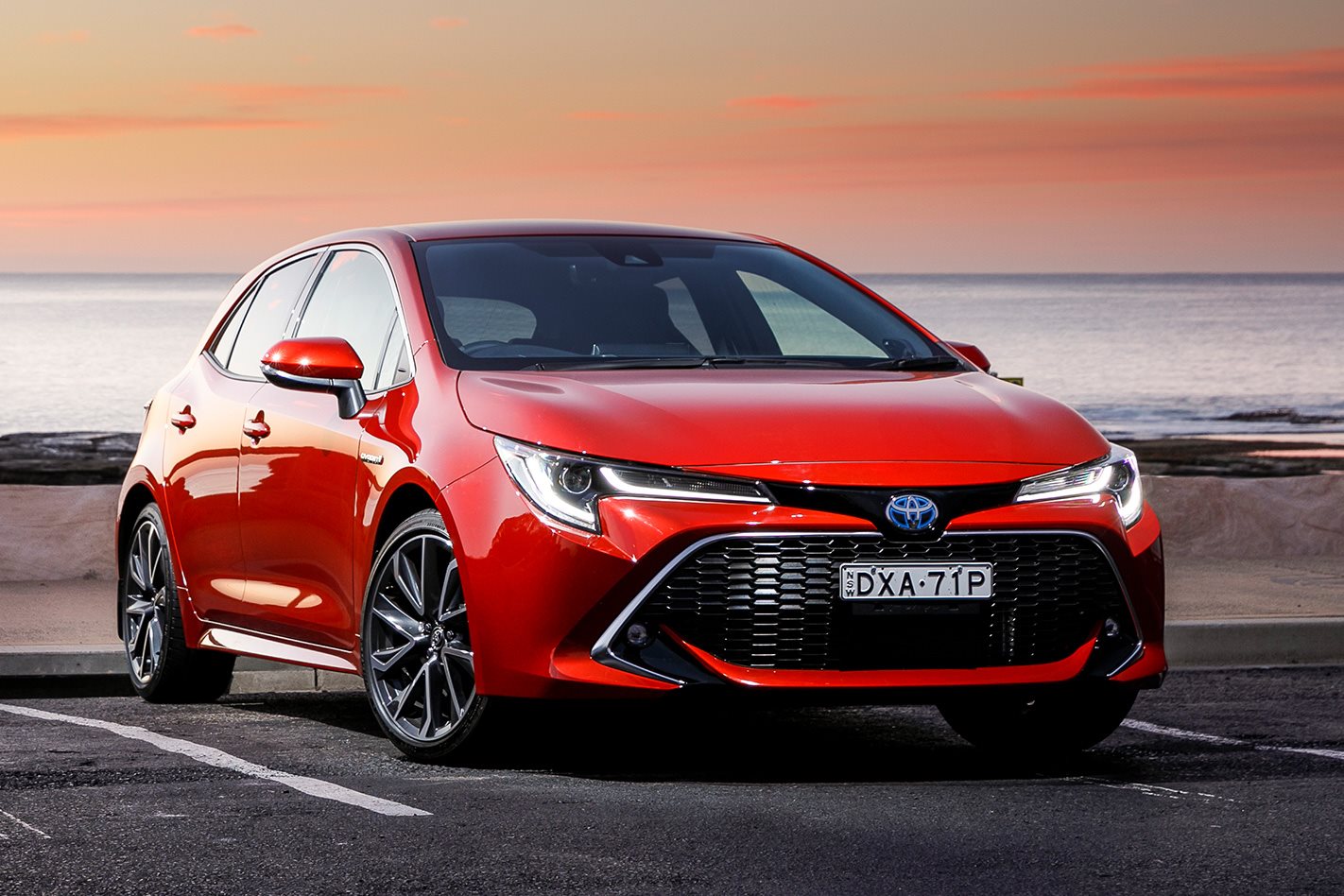ONCE upon a time there was a Japanese car company that earned a loyal fan base by building appealing, accessible cars with the kind of spirit people didn’t normally associate with vehicles of their price or format. That brand was called Toyota.
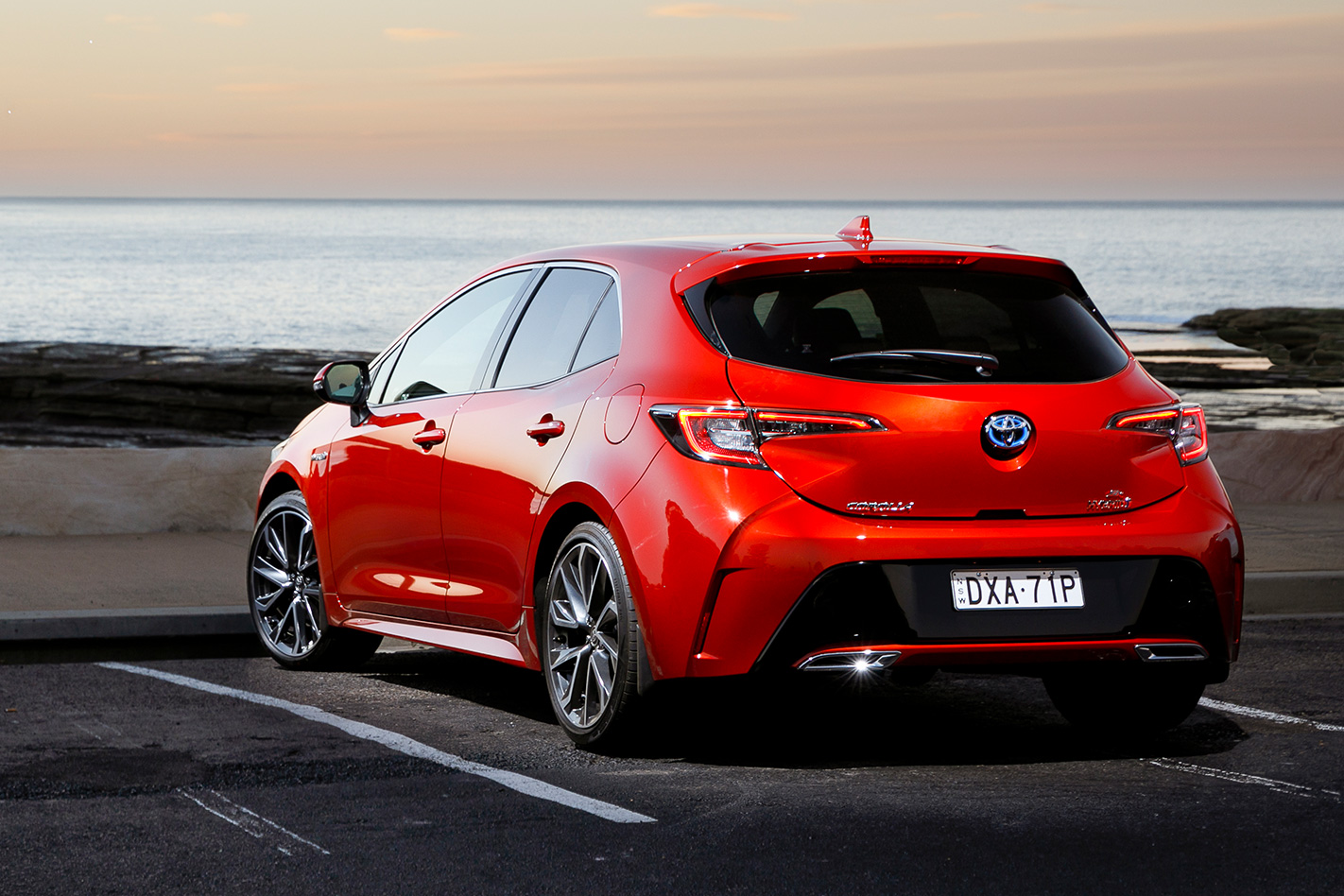
Maybe you remember it? For a long time, ‘Fun To Drive’ was the tagline of its Japanese advertising. Cars such as Corolla sat at the affordable end of its model line-up yet still had verve engineered into them. We didn’t know how good we had it until it was gone.
Economic conservatism brought about years of moderated blandness. Showrooms leveraged a reputation built in the better times to pedal ageing, monotone products with a decreasing amount of merit. But now, there’s something in the water again at Toyota City. The Big T is beginning to scale the foothills of a long overdue comeback, and the sparks of its TNGA-based revival are rekindling memories of what made it great in the past.
Toyota New Global Architecture (TNGA) is the platform that so far underpins Prius, C-HR, Camry and this 12th-generation Corolla. Its modular design is allowing Toyota to revamp its once-splintered approach toward developing cars for different markets. Investment dollars are going further, and the holistic step-change for Australia’s most popular passenger car is a dramatic one.
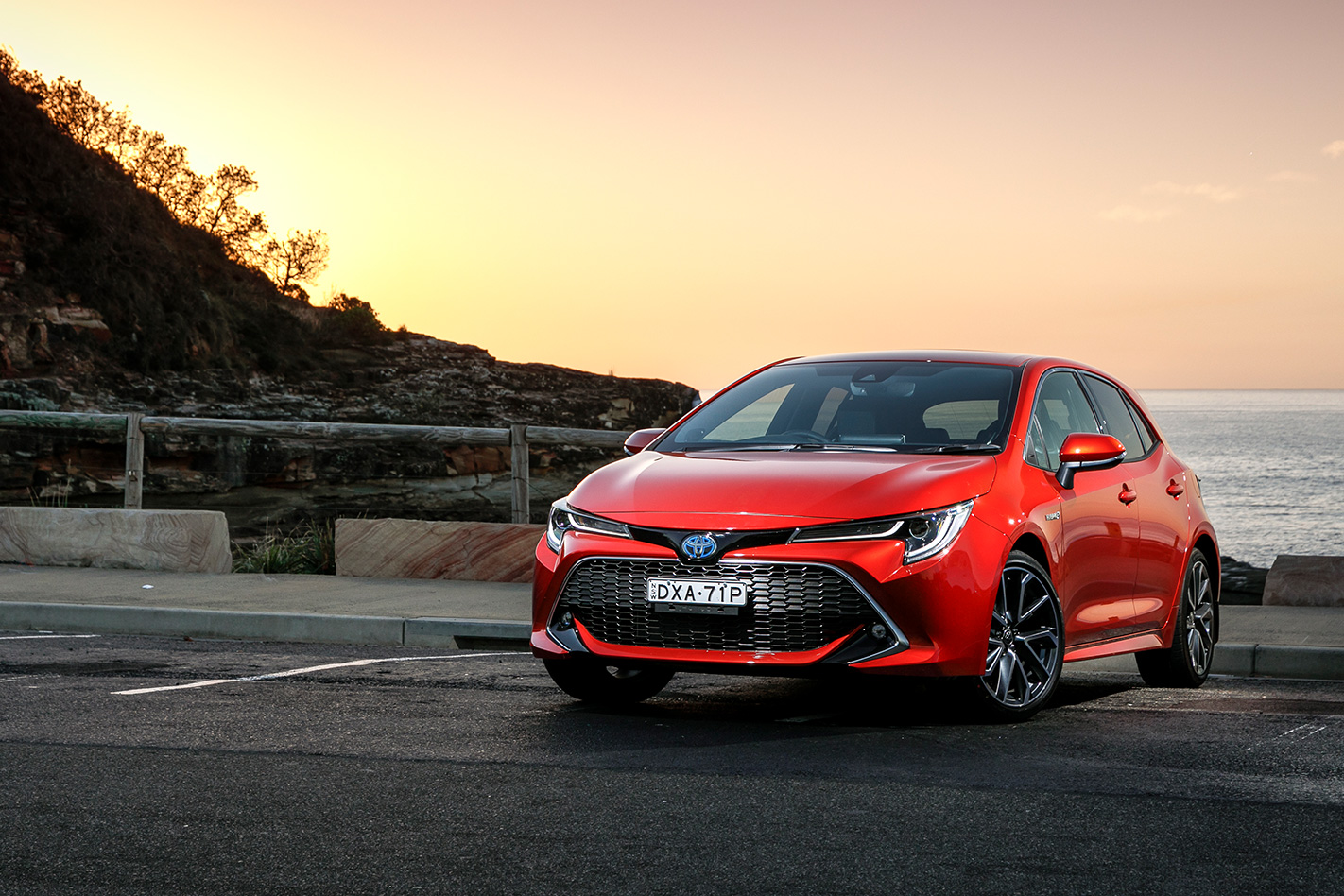
Boldness is what this all-new Corolla brings, stemming directly from the rediscovered confidence at Toyota, based in no small part on the success of TNGA. Torsional stiffness improves by a massive 60 percent, the wheels have been pushed out toward the corners of the body, opening up cabin space, and independent rear suspension ticks a key ingredient off the list of driving experience desirables. This sophisticated platform also brings a lower centre of gravity, something the designers have reflected in its self-assured styling.
Proportionally, Corolla seems broader than before, especially on attractive 18s fitted to the range-topping ZR variant driven here. The body hunkers down over them, with the bulk of its visual mass sitting lower. Thinner pillars up top increase the surface area of glass, and neat details include the complex, two-piece shoulder lines that repel each other at the rear door handles.
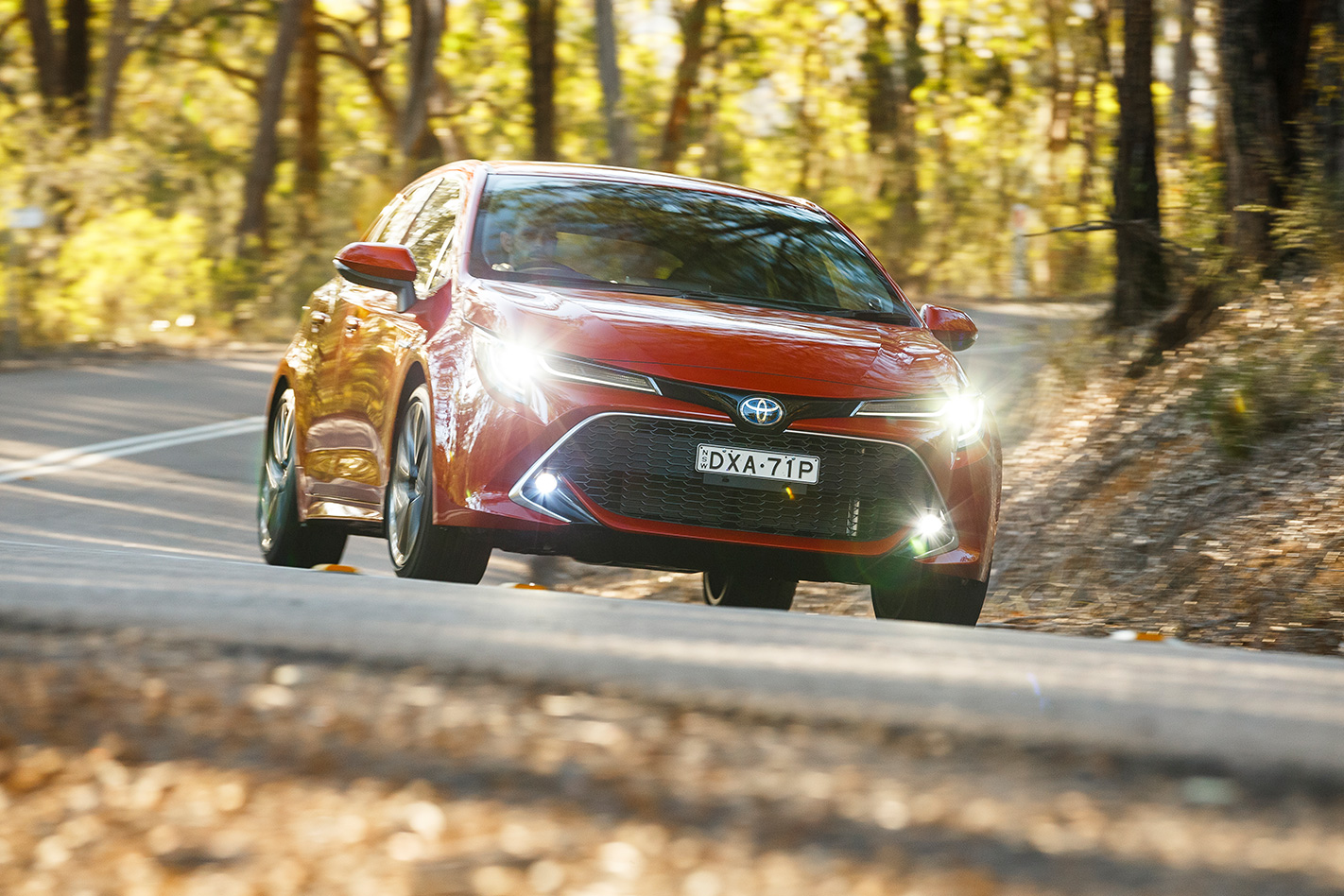
Combine intriguing sheet metal with distinctive LED strips and headlights that mimic Gene Simmons’ stage makeup, and Corolla now has road presence that’s in stark contrast to its predecessor. The old car’s pointy front appeared relatively modern, but the rest became increasingly boring the further back you looked.
The renovations inside are similarly interesting. No attempt has been made to emulate the homogenous minimalism of its European rivals. It’s unashamedly Japanese with numerous finishes, but all executed to a higher standard than before with more soft-touch surfaces capped off by real French seams rather than the fake, moulded stitching it used to have.
Gone too is the old dashboard, which was so slab-faced and intrusive that, sitting inside the car, it felt like somebody had already crashed it. And if there’s ever been a sign that Toyota has really changed – there is no separate digital clock. It’s just a shame the infotainment interface is yet to go through a similar metamorphosis.

Best of all are the sporty, microfibre-trimmed seats, which provide a nicely contoured and widely adjustable base to build your ideal driving position around.
A choice of two four-cylinder drivetrains splits the Corolla range; 2.0-litre petrol, or 1.8-litre petrol/electric hybrid, the latter identifiable by exterior badging with a subtle blue glow.
Pricing for the 125kW/200Nm 2.0-litre variants starts at $22,870 for the Ascent Sport with a manual gearbox, or $24,370 with a CVT. Fancier SX and ZR variants with the 2.0 are CVT only, and cost $26,870 and $30,370 respectively.
On the electrified side, the hybrid drivetrain is available across all trim grades for the first time. They start at $25,870 for an Ascent Sport, and top out with the flagship ZR, tested here, at $31,870. The 1.8-litre combustion engine makes just 72kW and 142Nm, with the battery pack and electric motors kicking in up to 53kW and 163Nm, but peak combined output is a modest 90kW.
It’s effectively the same drivetrain as the current Prius, though its control systems have been tweaked for better responsiveness. Around town at low speed much of its trundling is done in near silence under electric power alone. Sensitive ears will pick-up a high-pitched electrical hum, but for the most part it is satisfyingly serene.

Full EV mode is available below 60km/h for those with featherlight control of the throttle pedal. Prod it beyond about 30 percent and the combustion engine triggers, but the vibration-free transition to hybrid motivation is virtually impossible to perceive with anything other than your hearing.
That’s also a reflection on the hushed cabin, which keeps wind and tyre noise to a respectable minimum. The engine is the only thing to disturb the ambience when going for a gap in traffic or making a quick getaway. Performance is languid down low, but it peps up once past an initial pause for breath. The engine note loses some of its coarseness and the Jetsons whine fades a little as the complex e-CVT holds the drivetrain’s peak torque at almost 4000rpm.
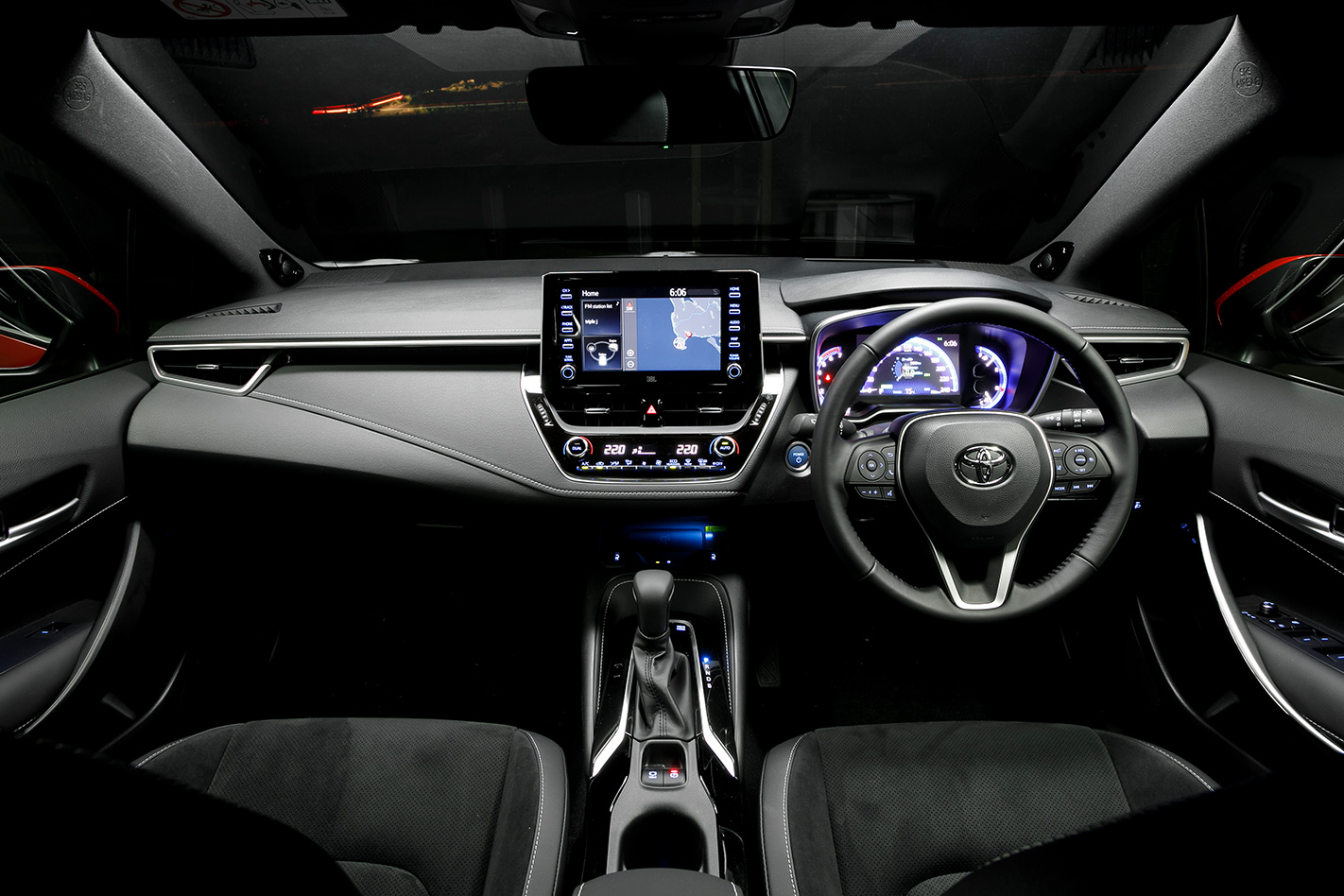
With a maximum of 90kW this hybrid Corolla isn’t going to win many touge battles, but the TNGA platform counters with its inherent strength and rigidity meaning softer dampers can be used for better bump absorption without hefty dynamic compromise, and the ride is brilliant. Driven with reasonable intent, it’s easy to develop a flow and carry speed.
The steering is light and a little too steer-by-wire in its lack of feel, but the off-centre immediacy is spot on. Point the tiller at an apex and the front hooks, the rear pivots and the whole thing glides around. It just needs an engine to match.
Down by the shifter there’s a button for ‘PWR’ mode, which shortens the throttle travel and feeds in more electrical assistance, but does nothing for gearbox performance. This hybrid Corolla doesn’t really cater for an overly spirited pilot as it omits artificial steps in its transmission calibration and foregoes paddle shifters. A little more manual control would be welcome, because the chassis is there to be exploited.
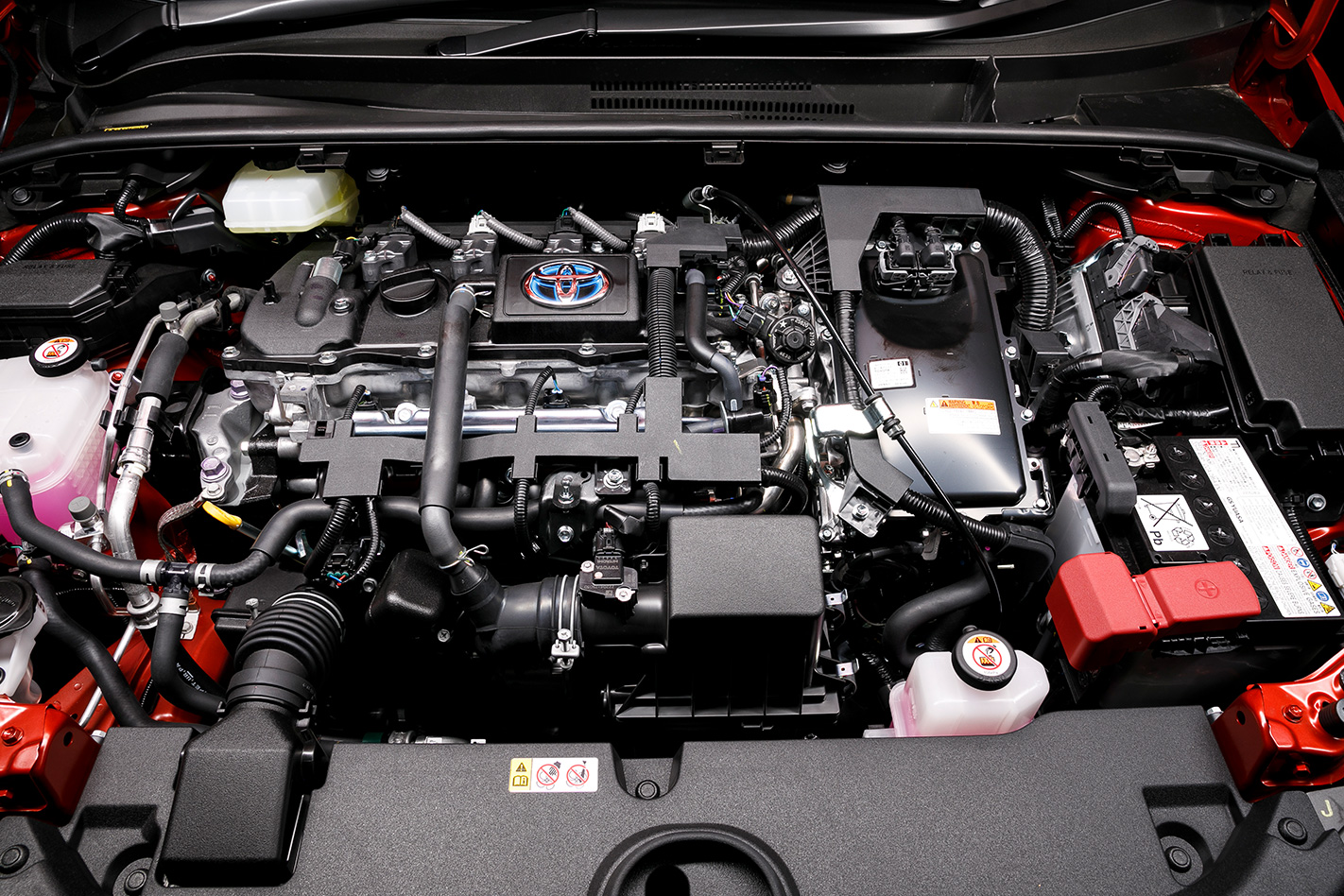
It’s brilliant, this TNGA platform, and with the added grunt of 2.0-litre variants, and especially with a manual ’box, Corolla should have the dynamic range to make existing warm hatches raise an eyebrow. As it is I had to remind myself that this isn’t trying to be one, but what a good one it could make – Gazoo, if you’re listening…
Of course, the real strength of the hybrid is its fuel economy, which didn’t deviate from the mid-5L/100km zone according to the dash display, even under the stress of my lead foot. Claimed combined efficiency is 4.2L/100km. Theoretically, this car could go 1000km on a single 43-litre tank of unleaded.
Toyota’s crusade toward driver enthusiasm has been slowly building momentum with the roll-out of current-gen vehicles, and Corolla looks like the strongest string yet in its TNGA bow. It adds to the optimism, and even excitement about the future of one of the world’s biggest automakers. And when is the last time a Corolla did that?
MORE: Toyota Corolla Range Review MORE: Toyota Corolla Specs, Range & Price

